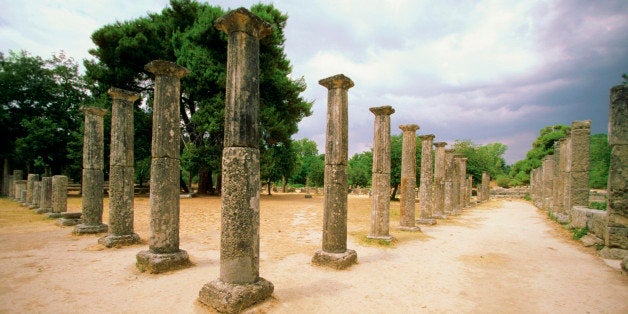
From An Opinionated Dictionary of Religion.
Stylites. noun. Holy pole sitters.
Four hundred years after Jesus, to nine hundred years after Jesus, numerous Near Eastern and Greek Christians climbed atop high marble posts and never came down again. Some of these Stylites (from a Greek word for pillar) were elevated to the status of saints and regarded as models of holiness. A harsh holiness.
Asceticism is the practice of denying various comforts to oneself and even inflicting upon oneself various occasions of discomfort. Most religions endorse ascetic discipline in the belief that physical and mental hardship is a sure path to spiritual maturity.
Through the ages, the really dedicated ascetics declined all comforts. They lived on tasteless foods. They rejected fashionable clothing and often wore intentionally uncomfortable clothes. They bathed infrequently. They spent less time (or no time) with the opposite sex. They disdained sex. They had no children and avoided the company of children. They absented themselves from adult society. They rarely smiled. They had no property. They had no money. And they had fewer bells, books and candles. (Actually, they tended to hoard the candles.).
Some of these spiritual experts went the added half-mile and bravely sought out pain, inserting jagged pebbles into their sandals for the long walk home, wrapping themselves in razor-sharp nettles, chaining themselves to boulders or trees, burying themselves in soft sand, whipping themselves to a ruddy pulp, holding an arm aloft until it withered, and sitting long years atop cold, bare ruined marble pillars.
Saint Simeon was the first of the pillar sitters and became The Very Model of a Pre-Modern Major Saint.
Simeon started the pillar trend in fifth century Syria. He lived on a pole top nearly forty years, descending only once to attend his own burial (necessitated by his slipping and falling at a very high velocity from atop the pole).
Since the human eye is naturally drawn to a large object sitting fifty feet high upon a post, Simeon achieved considerable fame and was even admired by the Roman emperor of his day. Simeon's celebrity produced numerous imitators for the next few hundred years.
And so the Stylites, plural, were born. The holy pillar sitters.
(Nod approval, Mr. Alfred Lord Tennyson. You wrote a poem to Mr. Simeon Saint Stylite in the third decade of the nineteenth century).
We have to grant that the Stylites performed asceticism with an unrestrained flair, and only those ascetics who buried themselves up to their nether lip or tethered themselves to boulders or wrapped themselves in bramble bushes came close to the theatricality of the pillar saints.
What is the origin of self-mortification in religions? Why the contrarianism, the rejection of normalcy? Why a harsh holiness?
Answer: There is a false dichotomy at work here. Body vs. Soul, Worldliness vs. Other-worldliness. To feed the soul one must punish the body. To win the other world one must disdain this world.
Wrong.
Wouldn't it have been holier even in the age of the Stylites to have kept your feet flat on the ground and worked for a living and raised a family?
And yet many still believe holiness is defined by otherworldly asexual asceticism. (What tiny one-digit percentage of any religion's saints was ever married and raised children?)
It's a wonder the average layman or laywoman didn't long ago press the case for the unmatched rigors of what might be called Domestic Holiness and the hardships of home and hearth: marriage, child-rearing, home cooking, home work, home repairs, paying debts, paying respects, and the congenial industry of making and keeping neighborly friends.
If we could begin right now to elevate world-embracing people as spiritual exemplars, in two hundred years our religions would have altogether new communions of saints to admire and write biographies about.
Saints of the future will be commonplace, worldly family types, too busy with the real asceticism of daily life to ever consider the pious antics of addled angels like Saint Simeon.
Here's a peek at a future biography of a future saint, to be penned in the year 2525:
'Saint Doris arose each day at 5:45 to cook breakfast for her clutch, prepare their lunches, dress them, and ferry them off to various schools before she herself commenced her medical rounds at Dandelion Hospital in Neo-Rochelle. Her husband, Saint Travis, had already taken the early train into The City to labor among the tired, huddled masses who gather there every day of the world--to work.